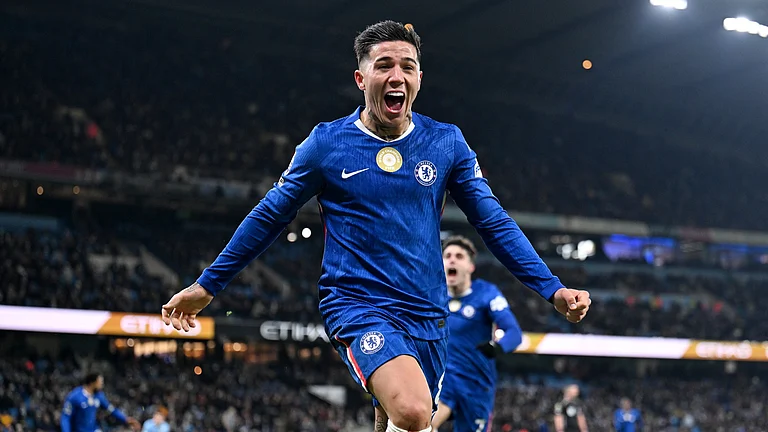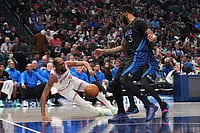Prime Minister Narendra Modi will commence his first state visit of the United States on June 21.
Modi's state visit to the United States is being considered as a sign of growing closeness between the two countries.
While Modi has been to the United States numerous times on official visits and to take part in multilateral engagements, such as the Quad leaders meeting, this is his first state visit. The state visit is the highest form of diplomatic exchange between two countries.
Historian Matthew Costello told PTI that a state visit is only reserved for closest friends and allies.
Here we explain what's the state visit's meaning, how Modi's upcoming state visit is important, and what's the history and evolution of state visits in the United States.
What is a state visit?
A state visit differs from official visits and visits to participate in multilateral events in a way that it involves much more pomp and show.
Moreover, state visits are usually for heads of state, not for the heads of government. This way, Modi's visit is significant as he is the head of government, not the head of state. The President of India is the head of state.
"In addition to numerous meetings, official visits sometimes include an official dinner — but not a glittering state dinner, with guests in formal eveningwear. A state visit, by definition, involves more pomp and ceremony than an official visit," says the Bureau of Global Public Affairs (BGPA) in the US Department of State.
The state dinner is the highlight of the state visit in which the President of the United States and the First Lady host the visiting leader at White House.
"A state dinner, always the social high point of a state visit, is planned meticulously, often months in advance. The menu typically features food and wines that reflect the culinary traditions of the guests of honor, but with an American twist. It represents the friendship between the nations of the hosts and the honored guests," says BGPA on its website.
Eminent American historian Matthew Costello told PTI that a US state visit is an honour given to the closest friends and allies and involves six months of meticulous planning by the White House and displays the best of American hospitality.
Significance of Modi's US state visit
Prime Minister Narendra Modi will be on a state visit to the United States on June 21-24.
The state visits are usually at the invitation of the host leader, who in this case is US President Joe Biden.
At the state dinner, the highlight of the state visit, Biden and First Lady Jill Biden will host Modi at the White House in a grand setting.
While many people just think of state visits and glamourous state dinners as merely a fancy affair, these events serve as an acknowledgement to the host's respect for the country of the visiting leader, said historian Matthew Costello, Vice President and Interim Director of the David M Rubenstein National Center for White House History.
He said, "But there's a lot that goes on that not only shows an acknowledgement and respect for the visiting country, their culture, and their ideals but also what are our shared, ideas and goals and objectives that we can work together as a united bilateral relationship."
Costello also said that the state visit to the United States also raises the profile of the visiting leader and his country.
He told PTI, "And what we've seen because the United States has become a global power, is that this invitation to be hosted at the White House is something that is very coveted. There are many leaders of other countries that want to go to the White House.
"That’s beneficial to them, not only in terms of their political capital at home, but it's beneficial to them on the international stage, people start to recognise and acknowledge that this person has quite a bit of leeway. They have a good relationship with the President."
The historical evolution of state dinners
Initially, the US state dinners were not as grand as they are now, but it began to change with the presidency of John F Kennedy.
Historian Mathew Costello noted that this evolution of the state dinners as coveted and grand affair coincided with the rise of the United States as the world superpower.
He told PTI, "But when we get to the Kennedy Administration, a big part of this is the Kennedys themselves; they use these occasions not only for diplomacy, but as an opportunity to demonstrate and, and display some of the best of American culture...And, so you're starting to see now what we think of today as more of the modern state dinner. One of the other things they incorporated that are now a central feature of the state arrival ceremony today is, prior to that, presidents would actually go and meet the visiting head of state, either at the airport or at the train station."
Costello also said that Kennedy also hired the first executive chef.
He further said, "It was during the Kennedy administration, they decided to use the South Lawn more as the backdrop for a state arrival ceremony because then they could invite people, they could include members of the Diplomatic Corps, members of Congress and what better backdrop to have for the President of the United States and a visiting head of state than to have the south side of the White House."
What should we expect during PM Modi's state visit?
As per the norm, Prime Minister Narendra Modi is expected to be received at the White House by President Joe Biden.
Historian Mathew Costello told PTI, "The day of (the state visit), there will be a state arrival ceremony at the White House, typically on the South Lawn. The President and the visiting Head of State will exchange remarks.
"They'll listen to the national anthems of the respective countries, review their troops, and then they'll go into the White House for conversation, and diplomatic exchanges later that night, there is a state dinner held in their honour, and then they spend the night there as the overnight guest of the President, the First Lady at Blair House, the president's official guest house."
Biden is expected to be joined by the American political brass, including his Cabinet members and Congressional leaders.
Costello also noted that holding the reception at the White House means that the President can include "members of the Diplomatic Corps and members of Congress in the reception.
While state dinners have traditionally been held in the State Dining Room of the White House, recent presidents have held these events in the lawns of the White House to accomodate more guests and make the events grander.
The PTI noted, "Typically, it holds anywhere from about 120 to 140 people. But, as people have probably noticed, recent state dinners have many more people. The Biden's recently had a state dinner that had more than 300 people...Former president Barack Obama did this quite a bit."
Explaining the evolution, Costello told PTI, "What we've seen, I would say in the last 20 years or so, is this shift away from doing the more traditional state dinners inside the White House, to now we're seeing more of the White House grounds being used as the outdoor venue for state dinners."
Costello noted that both Biden and former President Donald Trump have held state dinners in White House grounds instead of the dining room.
He told PTI, "President (Donald) Trump had one of his state dinners in the Rose Garden. And the Bidens have done this as well, putting up a tent on the South lawn so that you can invite 300 to 400 people to be part of a State Dinner."
Costello also noted that the frequency of state dinners have reduced over the decades, highlighting the importance it accords to the visiting leader and their country.
He told PTI, "The other thing that we've noticed that's been a difference since, especially with Reagan, (George W) Bush and (Bill) Clinton, is that state dinners are not happening with the same frequency as they were...And then you start to see them slow down with Bush and Clinton. And now it's become more typical to see Presidents have anywhere from maybe five to ten, depending on how many terms they serve in office."


























